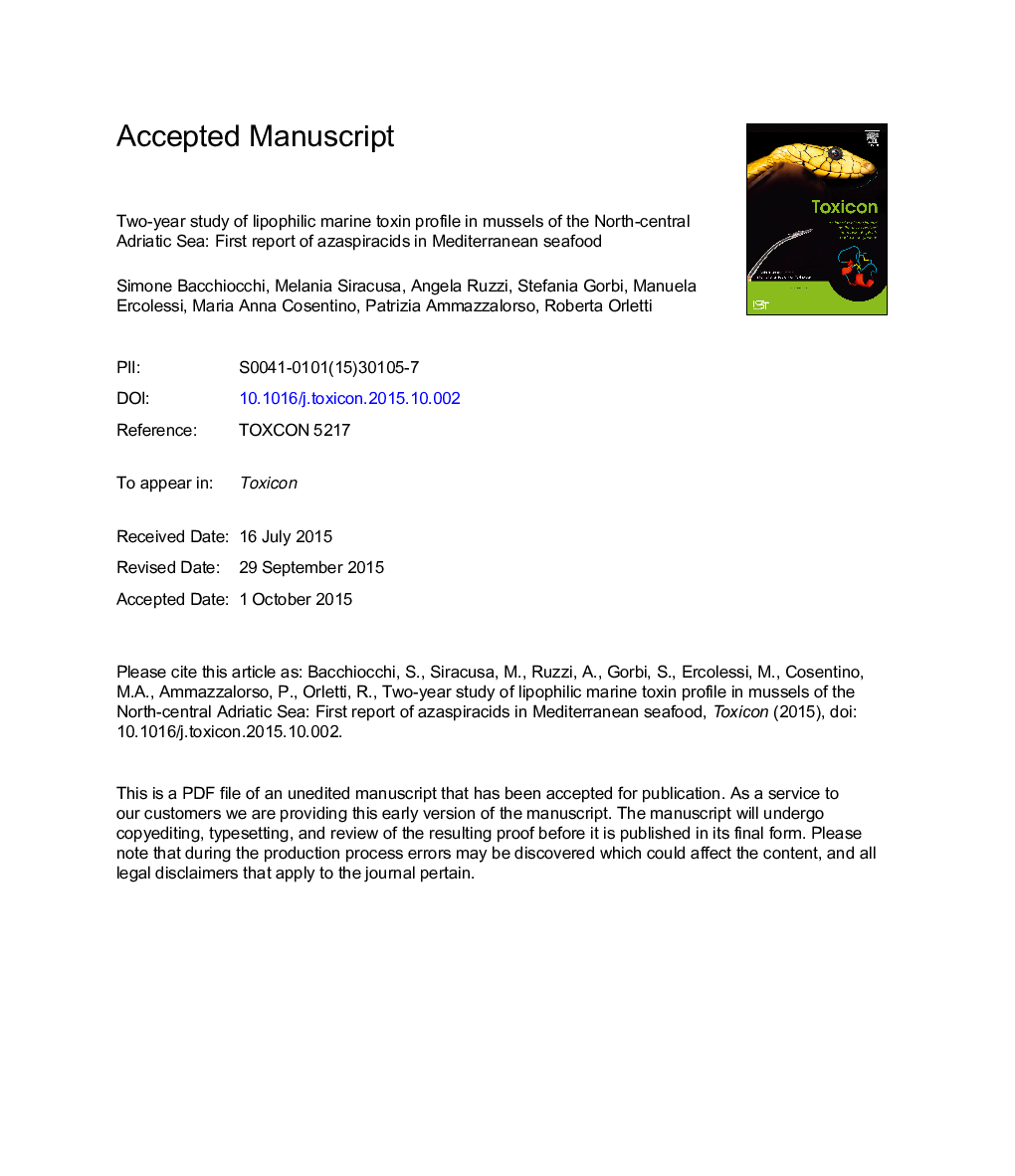| کد مقاله | کد نشریه | سال انتشار | مقاله انگلیسی | نسخه تمام متن |
|---|---|---|---|---|
| 8395172 | 1544128 | 2015 | 35 صفحه PDF | دانلود رایگان |
عنوان انگلیسی مقاله ISI
Two-year study of lipophilic marine toxin profile in mussels of the North-central Adriatic Sea: First report of azaspiracids in Mediterranean seafood
ترجمه فارسی عنوان
بررسی دو ساله مشخصات لکه های دریایی درمسیر دریای شمال دریای مدیترانه دریایی دریای مدیترانه
دانلود مقاله + سفارش ترجمه
دانلود مقاله ISI انگلیسی
رایگان برای ایرانیان
کلمات کلیدی
موضوعات مرتبط
علوم زیستی و بیوفناوری
بیوشیمی، ژنتیک و زیست شناسی مولکولی
بیوشیمی، ژنتیک و زیست شناسی مولکولی (عمومی)
چکیده انگلیسی
Since the late 1980s, the North-central Adriatic Sea has frequently experienced blooms of harmful algal species, producing marine lipophilic toxins (MLTs) which accumulate in mussels and pose a serious threat to consumer health. Here, we present a 2-year LC-MS/MS study (2012-2014) of the MLT profile in mussels from the North-central Adriatic Sea in the context of the presence of toxic phytoplankton concentrations in seawater. Okadaic acid increased in mussels from all areas during the summer and autumn-winter periods with a rising trend between 2012 and 2014. In the same periods, Dinophysis sp. increased in abundance in seawater, but the highest densities of algae did not always coincide with the highest levels of toxins in mussels. Yessotoxins (YTXs) content in mussel increased sharply in the autumn-winter periods even exceeding the legal limit; although this accumulation did not always correlated with the YTX-producers in water (such as Lingulodinium polyedrum and Protoceratium reticulatum) a massive bloom of Gonyaulax spinifera was reported in November 2013, suggesting the role of this species in YTXs shellfish contamination. Traces of Azaspiracid 2 (AZA-2) were observed often in mussels during the study period, confirming for the first time the presence of this biotoxin in Mediterranean seafood.
ناشر
Database: Elsevier - ScienceDirect (ساینس دایرکت)
Journal: Toxicon - Volume 108, 15 December 2015, Pages 115-125
Journal: Toxicon - Volume 108, 15 December 2015, Pages 115-125
نویسندگان
Simone Bacchiocchi, Melania Siracusa, Angela Ruzzi, Stefania Gorbi, Manuela Ercolessi, Maria Anna Cosentino, Patrizia Ammazzalorso, Roberta Orletti,
